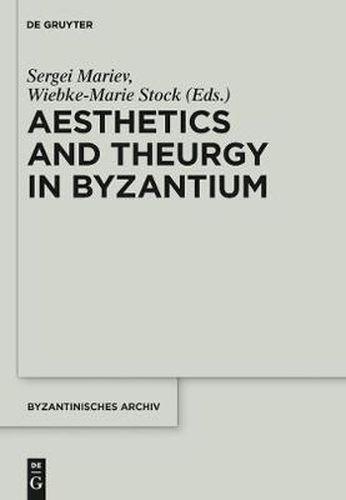Readings Newsletter
Become a Readings Member to make your shopping experience even easier.
Sign in or sign up for free!
You’re not far away from qualifying for FREE standard shipping within Australia
You’ve qualified for FREE standard shipping within Australia
The cart is loading…






The general scope of the present volume is to present a variety of approaches and topics within the growing field of research on Byzantine aesthetics. Theurgy in Neoplatonic and Christian contexts is represented by the contributions of W.-M. Stock and L. Bergemann; theories of beauty are at the centre of interest of the papers by S. Mariev and M. Marchetto. A. Pizzone approaches Byzantine aesthetics by looking for aesthetic experience in the literary texts, while the remaining contributions explore issues related to the iconoclast controversy: An important moment in the development of Byzantine philosophy on the eve of iconoclasm is the primary interest of A. del Campo Echevarria, who looks at the question of universals in John of Damaskos. The relationship between image and text in Byzantine illustrated manuscripts occupies the attention of B. Crostini. D. Afinogenov explores from a philological perspective the fate of important iconophile terminology in Old Bulgarian, while L. Lukhovitskij reconstructs from historical and philological perspectives the historical memory of the iconoclast controversy during the Late Byzantine Period.
$9.00 standard shipping within Australia
FREE standard shipping within Australia for orders over $100.00
Express & International shipping calculated at checkout
The general scope of the present volume is to present a variety of approaches and topics within the growing field of research on Byzantine aesthetics. Theurgy in Neoplatonic and Christian contexts is represented by the contributions of W.-M. Stock and L. Bergemann; theories of beauty are at the centre of interest of the papers by S. Mariev and M. Marchetto. A. Pizzone approaches Byzantine aesthetics by looking for aesthetic experience in the literary texts, while the remaining contributions explore issues related to the iconoclast controversy: An important moment in the development of Byzantine philosophy on the eve of iconoclasm is the primary interest of A. del Campo Echevarria, who looks at the question of universals in John of Damaskos. The relationship between image and text in Byzantine illustrated manuscripts occupies the attention of B. Crostini. D. Afinogenov explores from a philological perspective the fate of important iconophile terminology in Old Bulgarian, while L. Lukhovitskij reconstructs from historical and philological perspectives the historical memory of the iconoclast controversy during the Late Byzantine Period.